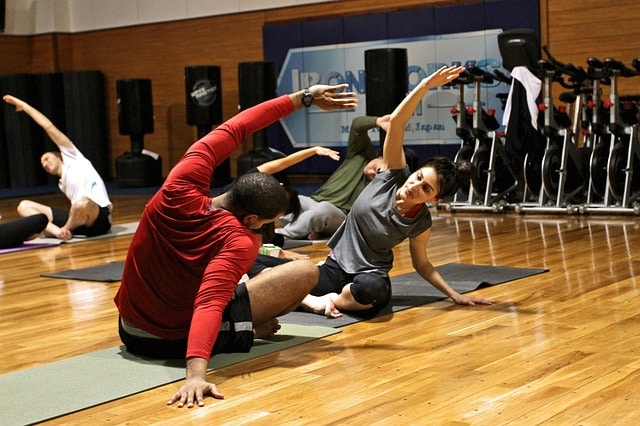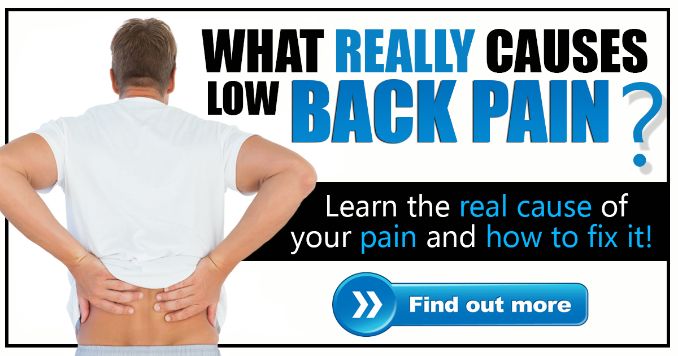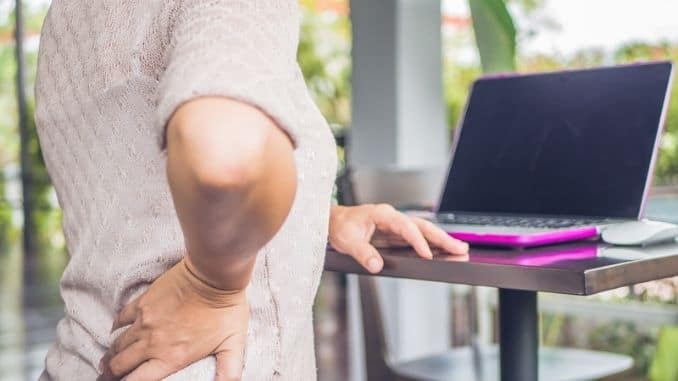
Problems around the hip and back can create similar types of pain, making it difficult to determine which is causing the issue.
Sometimes, people have trouble with both at the same time. This is so common that doctors now call it “hip-spine syndrome.”
To figure out what’s happening with your pain, start by zeroing in on your symptoms. Although they can overlap, certain symptoms tend to be more common with back pain and others that are more common with hip problems.
Look through the following lists and ask yourself which seems to describe the pain and discomfort you’re feeling better:
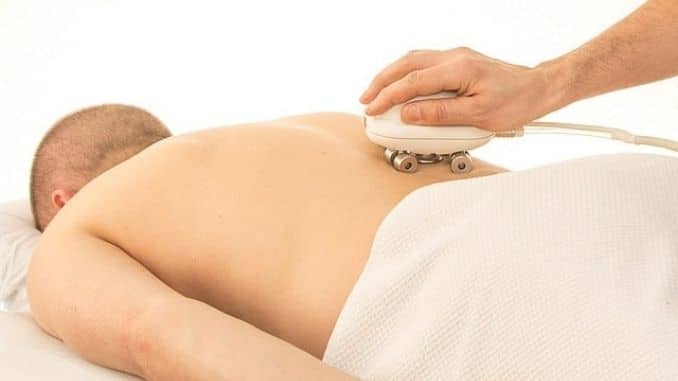
When It’s More Likely to Be a Hip Problem
- Pain is in the groin area
- Pain sometimes down the inner thigh
- Accompanying knee pain
- Pain and discomfort come and go, but become more frequent over time
- Stiffness
- Difficulty walking, getting out of the car or putting on shoes
- Pain gets worse when standing, walking or performing other exercises
- Pain gets better with rest
When It’s More Likely to Be a Back Problem
- Pain radiates across the back
- Pain occurs in the buttocks
- Pain occurs on the outside of the hip
- Pain gets worse when sitting or bending
- Pain improves when standing or walking
Rule Out Hip Joint Problems
Any pain felt around the area of the hip can spark worry that the joint is degrading, and we may have to go through surgery in the near future.
Although it’s always best to check with your doctor, you can often rule out hip joint problems by determining whether you are feeling any pain in the groin.

You may think of your hip as existing along the outer waist or near the hip bone, but most hip joint pain is felt in the groin area and possibly down the inside of the leg but not past the knee. This is because the hip joint sits behind the groin area, so groin pain is the most common type of pain associated with hip problems.
Perform the following exercises to determine if your hip joint may be involved in your pain:
- Knee to chest: Lie on your back on the floor. Bring one knee straight up into your chest while keeping the back pressed against the floor. If you feel pain in the front of the hip or groin area, the joint may be involved. Try the other leg as well.
- Foot point: While still lying on the floor, bring one knee up to a 90-degree angle. While holding the knee in place, have a partner take your foot and pull it toward him or her slowly to about 30 degrees. Keep the knee and lower leg straight to the rotation that occurs at the hip. Then, rotate the foot inward the opposite way. See if you feel any discomfort in the hip joint.
- Knee out: While still lying flat, place one foot on the other knee and allow the knee to fall outward to your side. Keep the other hip pinned to the floor.
Keep in mind that if you feel pain on the “outer” part of the hip, that’s typically not your joint — that’s muscle and tendon pain. What you’re looking for is pain on the inside or in the groin area.
Those with hip joint problems will also eventually notice that their range of motion becomes more limited. When you get up out of a chair or out of bed, you may find that you can’t move through the hips as easily as you did before.
If you notice pain with these or other exercises that seems to be focused in the groin or inside the hip joint area, there may be issues with the joint itself. Be sure to check with your doctor for more information.
Consider Whether It May Be Nerve Pain
Hip and back pain typically originate from one or more of these three sources:
- Joint
- Muscles and tendons
- Nerves
When you’re focusing on your own pain and trying to narrow it down, you can rule out nerve pain by asking yourself one question: Does the pain radiate down your leg?
If you answer “yes,” you probably have nerve pain, and it’s probably coming from your back. Radiating nerve pain is rarely linked to the hip. You may also have pain from the hip joint or muscles and tendons too, but nothing else “radiates” pain like nerves do.
Possible symptoms of nerve pain include:
- Pain that moves from the back or buttocks down into the leg
- Pain that exists in the lower back and hip region
- Pain that reaches below the knee down to the foot and ankle
- Numbness or tingling in the leg, ankle or foot

Nerve pain may be caused by a herniated disk in the back pushing down on the nerve or could be coming from certain muscles in your buttocks that are pressing on the sciatic nerve.
The piriformis muscles in the buttocks, for example, are commonly to blame for sciatic nerve pain. Tight lower-back muscles contribute to tight piriformis muscles, which then press down on the nerve, causing pain to radiate down the leg. Here are a couple of tests you can try:
- Sit upright in a chair, then straighten the leg on the painful side. Slouch your shoulders and lower your head. As you pull your toes toward you, do you feel pain shooting up the leg into your back? If so, that may be nerve pain.
- Lie flat on the floor and raise one leg straight up as far as you can. Bend your foot to pull your toes toward you. If you feel pain shooting up into your buttocks or back, that can also indicate nerve pain.
Your doctor can help you narrow it down further. Often, exercises can help you relieve nerve pain.
Check for Muscle Pain
If you don’t think your pain is coming from your hip joint or your nerves, tight and sore muscles, and strained tendons are most likely to blame. Even if you did find that you experienced pain with some of the tests above, some of your pain may still be originating in the muscles.
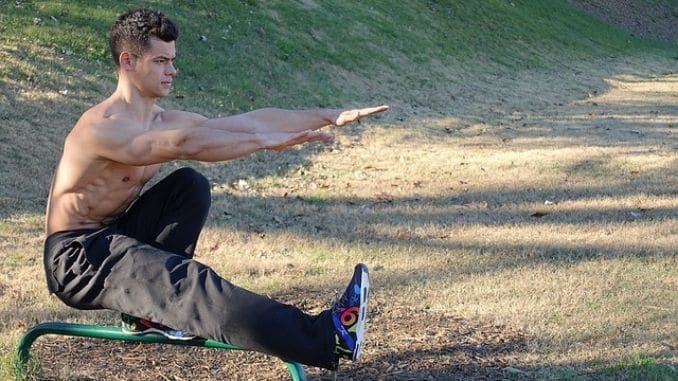
Sprains and Strains
These two are slightly different but can create similar types of pain:
- Sprain: Torn or overstretched ligament, which are tissues that connect bone to bone
- Strain: Torn or overstretched tendon, which attach muscle to bone, or muscle.
These sorts of injuries are typically caused by lifting something heavy, engaging in sports, suffering a fall or other injury or twisting the body awkwardly.
Typical symptoms include:
- Muscle pain and weakness
- Tenderness
- Swelling
- Reduced range of motion
The biggest clue that you may be suffering from a strain or sprain is that the pain will get worse with activity and better with rest.
Treatment: Rest, ice packs, and gentle stretching.

Tight Hip Flexors
If you feel the following symptoms, it could be that your hip flexors—muscles that extend from the hips to the knees — are tight. This is a common problem in our world today because it’s typically caused by too much sitting. Some examples of tight hip flexors are:
- Tenderness in the upper leg or outside of the hip
- Muscle spasms in the hips or thighs
- Sore hips or thighs
- Low back and hip pain
- Tightness or stiffness after sitting or sleeping
- Reduced strength when kicking or jumping
Tight hip flexors are often the cause of hip and back pain when they occur together because they can compress the lower back and create problems. Tight hip flexors also result in weak glutes, and the hamstrings and lower back muscles have to compensate, leading to low back pain.
Treatment: Stretches and exercises to help strengthen and lengthen the hip flexor muscles. Some common ones include:
- Butterfly pose: Sit up straight on the floor, put the soles of the feet together and press the knees outward. Hold for 10 to 30 seconds and repeat.
- Bridge pose: Lie on your back with your knees bent, feet on the floor. Raise the hips off the floor slowly while squeezing the glutes. Hold for 10 to 30 seconds, lower down, and repeat.
- Knee hold: Standing straight, bend one knee up, lifting the upper part of the leg toward the ceiling while balancing on the other foot. Hold for 30 seconds and switch sides.
Physical Therapy Often Relieves Low Back and Hip Pain
There are many other stretches and strengthening exercises that can help relieve lower back and hip pain. If you don’t experience relief with the exercises listed here, talk to your doctor and physical therapist for more help.
Realize too that something else may be causing your pain — things like uneven leg lengths, foot problems, incorrect posture and more. The good news is that most cases are not serious, and you can feel better by simply committing to a regular exercise program.
Even if you find out that your hip joint is to blame, hip joint surgeries are very common today, and they have a high rate of success.
For your complete guide to eliminating lower back pain, make sure to check out Low Back Pain Solved, here!
.

